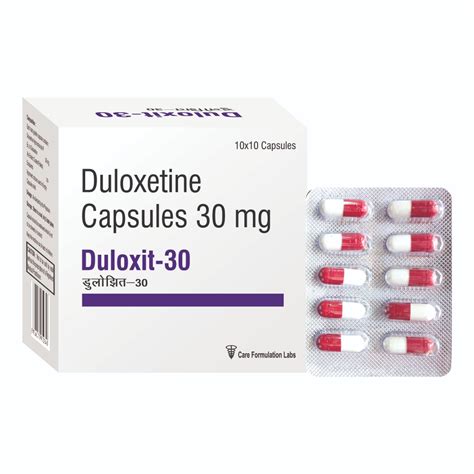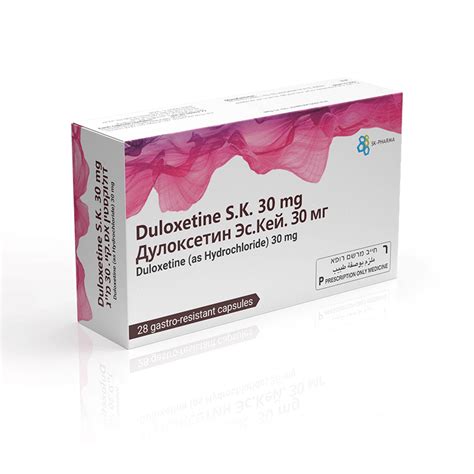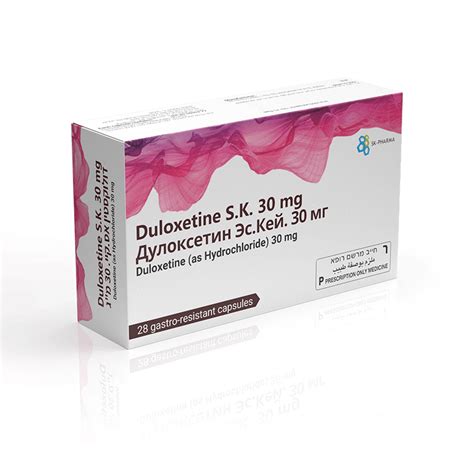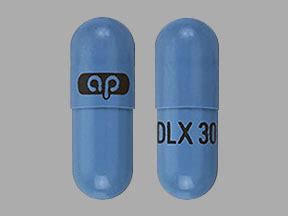Intro
Discover key facts about Duloxetine 30mg, including its uses, side effects, and benefits, to understand this antidepressant medication and its role in treating depression, anxiety, and nerve pain management.
Duloxetine, a medication primarily known for its use in treating major depressive disorder, generalized anxiety disorder, fibromyalgia, and neuropathic pain, has been a subject of interest for many due to its efficacy and the range of conditions it can help manage. When prescribed at a dose of 30mg, duloxetine can have specific effects and considerations that patients should be aware of. Here's an in-depth look at duloxetine 30mg, covering its uses, benefits, potential side effects, and other crucial information.
The importance of understanding duloxetine, especially at specific doses like 30mg, cannot be overstated. It's a serotonin-norepinephrine reuptake inhibitor (SNRI), which means it works by increasing the levels of two neurotransmitters in the brain: serotonin and norepinephrine. These chemicals help maintain mental balance and prevent the occurrence of pain signals. For patients considering or already taking duloxetine 30mg, knowing how it works, its benefits, and potential downsides is essential for informed decision-making and effective management of their condition.
Duloxetine's application in managing various health issues makes it a versatile medication. However, like all medications, it comes with its own set of considerations, including dosage, which plays a significant role in its efficacy and safety profile. The 30mg dose is often a starting point for many patients, allowing clinicians to assess the drug's effectiveness and the patient's tolerance before considering adjustments. Understanding the specifics of duloxetine 30mg, including its pharmacodynamics, common side effects, and how it compares to other doses, is vital for both healthcare providers and patients.
Introduction to Duloxetine 30mg

Duloxetine 30mg is a commonly prescribed dose for the initial treatment of various conditions, including depression, anxiety, and certain types of pain. This dose allows for the gradual introduction of the medication into the patient's system, helping to minimize potential side effects while still providing therapeutic benefits. The medication is known for its relatively quick onset of action, with some patients beginning to notice improvements in their symptoms within a couple of weeks, although it may take up to 8 weeks to experience the full effects.
Pharmacological Profile
The pharmacological profile of duloxetine is characterized by its dual action on serotonin and norepinephrine. By inhibiting the reuptake of these neurotransmitters, duloxetine increases their concentration in the synaptic cleft, which is believed to contribute to its antidepressant, anxiolytic, and analgesic effects. This mechanism of action distinguishes duloxetine from selective serotonin reuptake inhibitors (SSRIs), which primarily affect serotonin levels. The dual-action mechanism may offer additional benefits for patients who have not responded adequately to SSRIs or other treatments.Benefits of Duloxetine 30mg

The benefits of duloxetine 30mg are multifaceted, reflecting the medication's broad spectrum of therapeutic applications. For patients with depression, duloxetine can help improve mood, increase energy levels, and enhance overall quality of life. In the context of anxiety disorders, it can reduce symptoms of anxiety and fear, making it easier for patients to engage in daily activities without being overwhelmed by anxiety. Additionally, for those suffering from neuropathic pain or fibromyalgia, duloxetine 30mg can provide significant relief from chronic pain, improving sleep quality and physical function.
Some of the key benefits include:
- Improved mood: Duloxetine can help alleviate depressive symptoms, leading to a more stable and positive mood.
- Anxiety reduction: It is effective in managing generalized anxiety disorder, social anxiety disorder, and panic disorder.
- Pain management: Duloxetine provides relief from neuropathic pain, fibromyalgia, and chronic musculoskeletal pain.
- Enhanced sleep: By reducing pain and anxiety, duloxetine can indirectly improve sleep quality.
Potential Side Effects
While duloxetine 30mg is generally well-tolerated, like all medications, it can cause side effects. Common side effects include nausea, dry mouth, constipation, fatigue, and increased sweating. In some cases, patients may experience more severe side effects, such as changes in appetite, weight changes, and sexual dysfunction. It's crucial for patients to discuss any side effects with their healthcare provider, as adjustments in dosage or additional treatments may be necessary to manage these effects.Comparing Duloxetine 30mg to Other Doses

Duloxetine is available in various doses, ranging from 20mg to 120mg, with 30mg, 60mg, and 90mg being common prescription strengths. The choice of dose depends on the patient's condition, response to treatment, and tolerance of side effects. For example, some patients may start with a lower dose like 30mg to assess tolerance before potentially increasing to a higher dose like 60mg for greater therapeutic effect. The flexibility in dosing allows clinicians to tailor the treatment to the individual needs of each patient.
Dosing Considerations
When considering duloxetine 30mg, several factors come into play, including the patient's medical history, current medications, and the specific condition being treated. For instance, patients with liver or kidney dysfunction may require dose adjustments due to the potential for decreased drug clearance. Additionally, duloxetine should be used cautiously in patients with a history of suicidal thoughts or behaviors, as with other antidepressants, due to the risk of increased suicidality in some individuals.Interactions and Precautions

Duloxetine 30mg, like other medications, can interact with various substances, including other prescription medications, over-the-counter drugs, and herbal supplements. Patients should inform their healthcare provider about all medications and supplements they are taking to avoid potential drug interactions. Some notable interactions include:
- Monoamine oxidase inhibitors (MAOIs): Concurrent use with duloxetine is generally contraindicated due to the risk of serotonin syndrome.
- Serotonergic agents: Combining duloxetine with other serotonergic drugs can increase the risk of serotonin syndrome.
- Blood thinners: Duloxetine may increase the risk of bleeding when used with anticoagulants.
Special Populations
In special populations, such as the elderly, children, and pregnant or breastfeeding women, the use of duloxetine 30mg requires careful consideration. Elderly patients may be more susceptible to the side effects of duloxetine due to decreased drug clearance and the presence of comorbid conditions. In pregnant women, duloxetine should be used with caution, as there is a potential risk of fetal harm, particularly in the third trimester. Breastfeeding mothers are advised against using duloxetine due to the potential for infant exposure.Conclusion and Future Directions

In conclusion, duloxetine 30mg presents a valuable treatment option for a range of conditions, including depression, anxiety disorders, and certain types of pain. Its dual-action mechanism and flexible dosing regimen contribute to its therapeutic efficacy and patient tolerability. As with any medication, a comprehensive understanding of its benefits, potential side effects, and interactions is crucial for maximizing its therapeutic potential while minimizing risks.
For future directions, ongoing research aims to further elucidate the pharmacological properties of duloxetine, explore its potential applications in other medical conditions, and develop strategies to enhance its efficacy and safety profile. The development of new formulations or delivery systems could also improve patient compliance and outcomes.
Final Thoughts
Duloxetine 30mg is a medication that offers hope and relief to many individuals suffering from debilitating conditions. By understanding its mechanism, benefits, and considerations, patients and healthcare providers can work together to tailor treatment plans that meet individual needs, ultimately leading to better health outcomes and improved quality of life.We invite you to share your thoughts, experiences, or questions about duloxetine 30mg in the comments below. Your input can help others and contribute to a more informed discussion about this important topic.
What is duloxetine 30mg used for?
+Duloxetine 30mg is used to treat major depressive disorder, generalized anxiety disorder, fibromyalgia, and neuropathic pain.
How long does it take for duloxetine 30mg to start working?
+Some patients may start noticing improvements in their symptoms within a couple of weeks, but it may take up to 8 weeks to experience the full effects of duloxetine 30mg.
Can duloxetine 30mg be used in combination with other medications?
+Yes, but it's crucial to inform your healthcare provider about all medications and supplements you are taking to avoid potential drug interactions.
Are there any specific dietary restrictions while taking duloxetine 30mg?
+There are no specific dietary restrictions, but it's recommended to avoid alcohol and to consult with your healthcare provider about any concerns regarding food or drink interactions.
Can duloxetine 30mg be used during pregnancy or breastfeeding?
+Duloxetine 30mg should be used with caution in pregnant women and is generally not recommended for breastfeeding mothers due to the potential risk of fetal or infant exposure.
